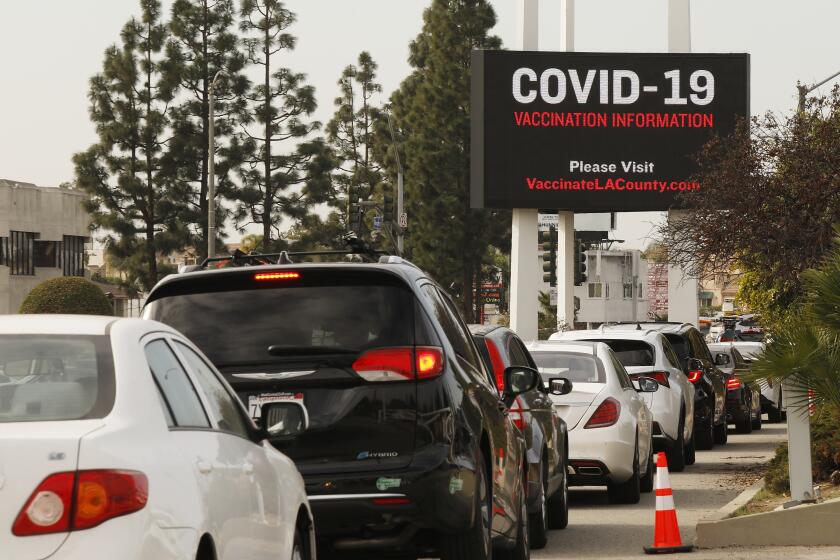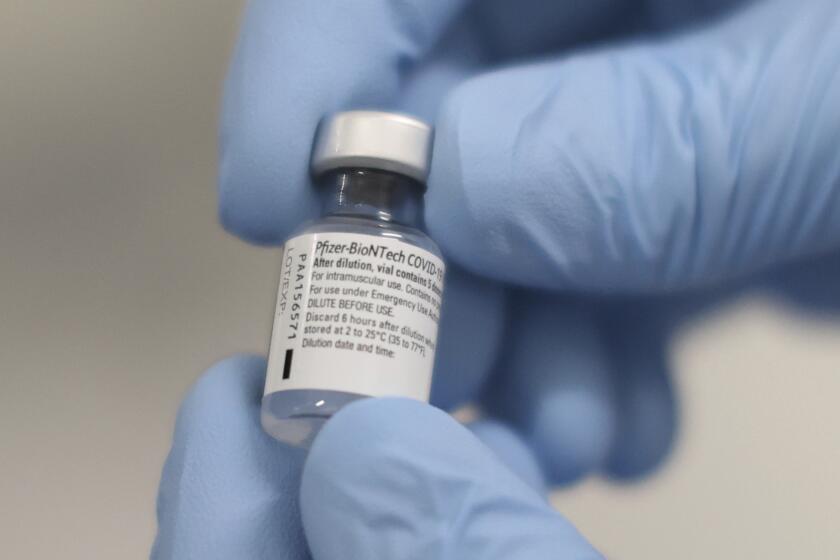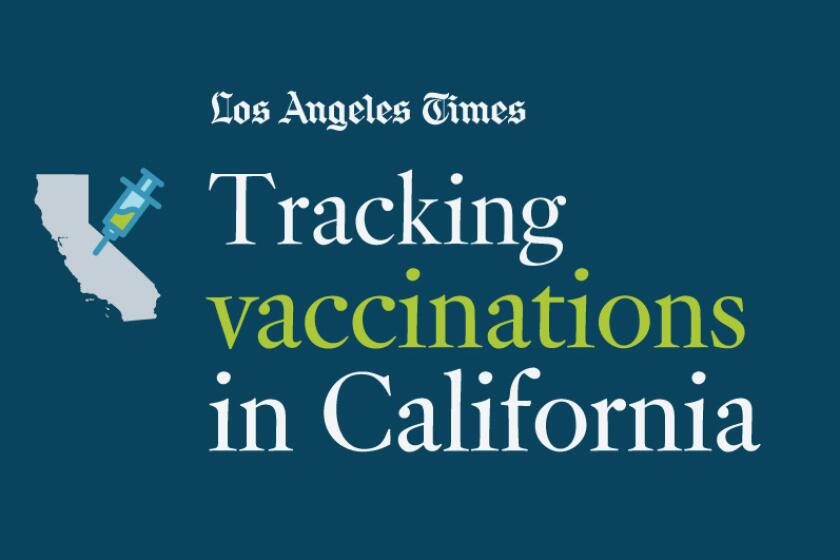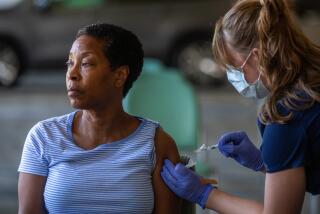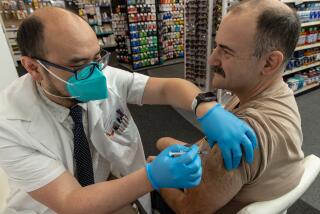How to get a COVID-19 vaccine dose in Riverside County
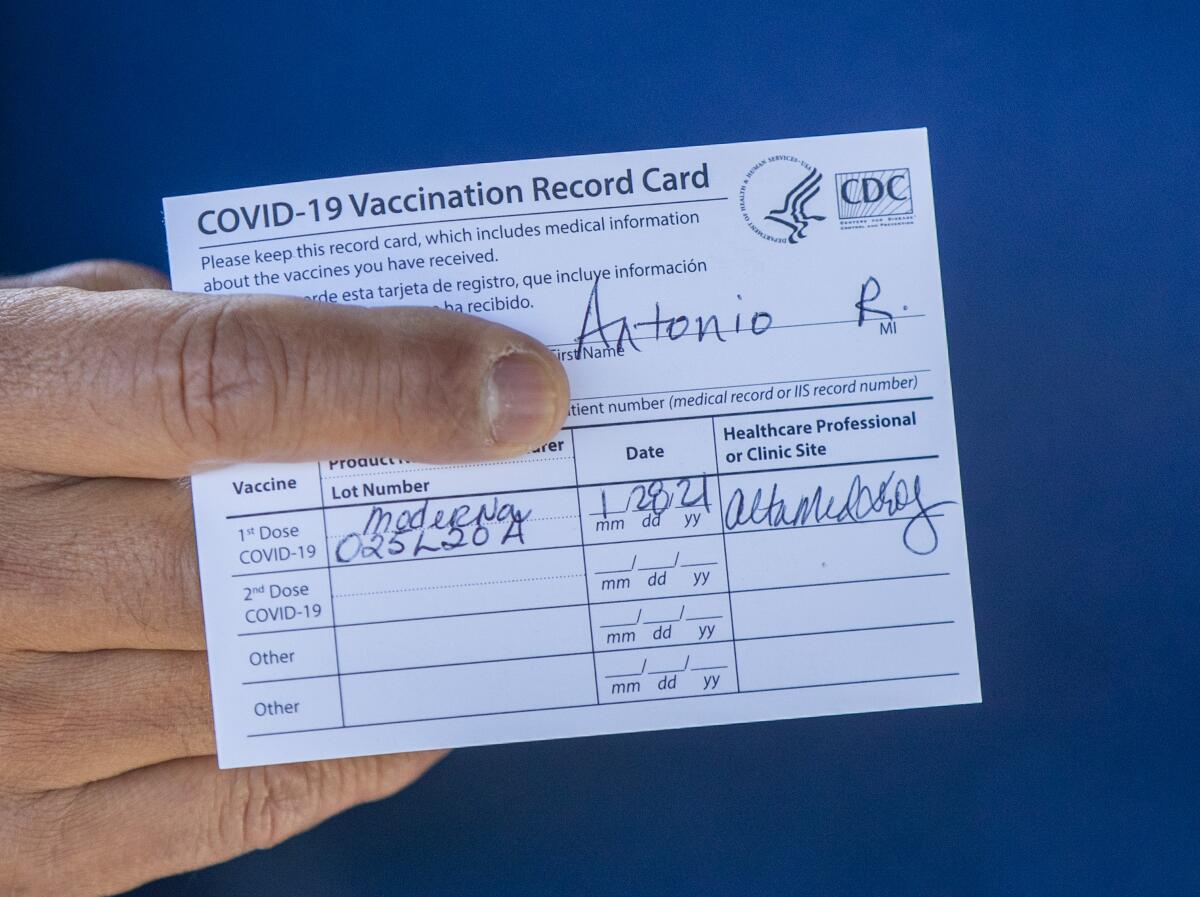
Weâre now well into the rollout of COVID-19 vaccines in California, but many questions remain for people attempting to schedule their inoculations.
If you live or work in Riverside County, hereâs what you need to know about the process of getting a vaccine from the county public health agency. (The county also works with community partners â such as pharmacies and urgent care facilities â which run their own systems.)
The people currently eligible to be vaccinated are healthcare workers; residents of long-term care facilities; people 65 and older who live or work in Riverside County; people who work in certain types of jobs, including food and agriculture, education and child care, and emergency services; and people with high-risk medical conditions or disabilities. Detailed eligibility criteria are available on the California Department of Public Health website. If you arenât yet eligible, sign up for notifications from the state at myturn.ca.gov.
This is the most up-to-date information available for Riverside County. Information on other Southern California counties is here.
Secure an appointment
First things first, bookmark Riverside Countyâs vaccination website: rivcoph.org/COVID-19-Vaccine.
The county is operating several large distribution sites, including at the Indio and Perris fairgrounds, Corona High School and the Lake Elsinore stadium. The countyâs website has a table organized by location that you can select from. The scheduling systems vary by location, so you may need to create accounts or fill out your information for Curative, OptumServe and other appointment systems. If no appointments are available on a given day, keep checking, as more can open up when more vaccine supply becomes available.
You can also call 2-1-1 from within the county to get help, in English or Spanish, scheduling an appointment.
Jose Arballo Jr., senior public information specialist with the county public health agency, said the county typically publishes public communications announcing appointment availability. New appointments are usually opened around noon. On a day in January, for example, more than 10,000 appointments came online at noon and were fully booked in 34 minutes, Arballo said.
So keep trying the county website as well as the community partners.
Nearly 600,000 doses have so far been administered in the county of almost 2.5 million people.
The process for getting a COVID-19 vaccine varies county to county.
Get your first shot
When the time comes for your appointment, go to the specified distribution site. Some are walk-in; some are drive-through, in which you remain in your car for the entire process.
Arballo said people shouldnât arrive more than 30 minutes early to avoid overcrowding. Some sites are outdoors, so check the weather and dress accordingly. Officials have moved operations indoors for inclement weather when possible. Wear a mask (or two).
When you arrive and line up, screeners will make sure you have an appointment and double check the time. Then youâll be directed to a check-in area. You must show identification to confirm your age and residency and answer a few questions. (If you work in the county or in an industry that is currently eligible, youâll need to provide proof of that as well.)
Once you are checked in, youâll wait for a technician to be available to give you your shot. Research has shown that smiling when you receive the shot can reduce pain and stress. Try it.
After your shot, youâll get a vaccination card indicating you got your first dose. It will also note the type of vaccine you received and the date when you should receive your second dose (21 days after the first for the Pfizer vaccine; 28 days after for Moderna). If you got the Johnson & Johnson vaccine, youâre done â no second dose needed.
Youâll also be directed to a waiting area for a 15-minute observation period. Thatâs just in case of very rare allergic reactions. Once your 15 minutes has ended, youâll confirm to an observer that youâre OK and be on your way.
The whole process can take from 30 minutes to two hours, Arballo said, depending on how many people are in line.
Get an appointment for your second dose (Pfizer and Moderna only)
Arballo said that you will be notified â either through the appointment system or by email â when itâs time for your second appointment. Instructions will be provided for making the appointment.
You need to receive the same vaccine â Pfizer for Pfizer, Moderna for Moderna â but you donât have to receive it at the same distribution location, Arballo said.
COVID-19 vaccines are now being administered to healthcare workers in the U.S. What are your questions about the timeline, the safety or the science?
Other situations
If you make your first appointment through an organization other than the county public health agency, you should confirm information about second doses with them.
Arballo emphasized that the supply of vaccine that the county receives can vary â sometimes it gets more or less than it expects â and that dictates how many appointments can be opened. âItâs a process,â he said.
Experts say about most Americans will need to be vaccinated to bring the coronavirus pandemic under control. Track Californiaâs progress toward that goal.
More to Read
Sign up for Essential California
The most important California stories and recommendations in your inbox every morning.
You may occasionally receive promotional content from the Los Angeles Times.
